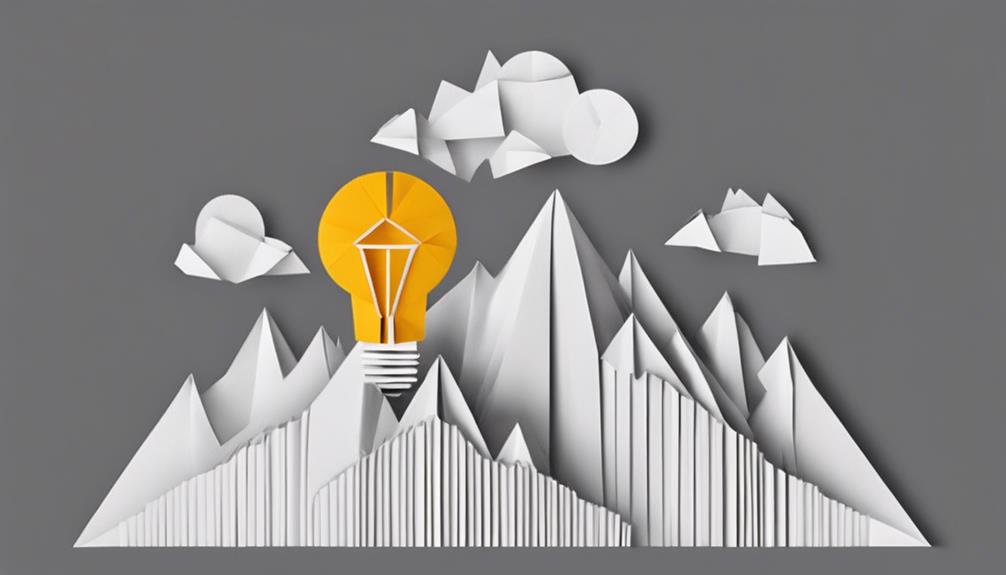The self-help movement has come a long way since the 1970s. It started with figures like Audre Lorde, linking self-care to political resistance and mental health. As society grappled with issues like economic instability and collective trauma, self-help narratives shifted to emphasize communal resilience and individual well-being. Today, you'll find personalized self-care practices gaining popularity, alongside a thriving wellness market valued at over $5.3 trillion. Social media has made self-help accessible, fostering openness about mental health. If you're curious about how these trends continue to shape our understanding of self-care, there's so much more to uncover.
Key Takeaways
- The self-help movement gained momentum in the 1970s, linking personal development with social justice and mental health advocacy, particularly in marginalized communities.
- Feminist writers in the 1960s and 1970s emphasized self-care as essential for mental well-being, intertwining personal growth with collective activism.
- Economic challenges and collective trauma, notably post-9/11, shifted self-help narratives towards coping strategies for mental health and financial stability.
- The rise of social media, especially the #selfcare movement, has popularized wellness practices, making self-care more accessible and community-oriented.
Historical Roots of Self-Help
The self-help movement has deep historical roots, dating back to influential works like Samuel Smiles' "Self-Help," which emphasized education as a pathway to personal and social advancement.
Throughout the 20th century, self-care emerged as a critical response to social injustices affecting the Black community, intertwining health and wellness with radical history. The Black Panther Party, for instance, advocated for holistic approaches to health, addressing medical racism and promoting community health initiatives. This multifaceted approach to personal development highlights the importance of navigating the self-help landscape with a critical eye, recognizing that individual growth is often influenced by broader social factors.
In the 1960s and 1970s, feminist writers and civil rights activists began highlighting self-care as essential for mental health and personal empowerment. They connected self-care to broader movements for social justice and women's liberation, arguing that individual well-being was crucial for collective action. This period saw a surge in self-help literature focusing on psychological well-being, coinciding with the rise of therapy and wellness retreats.
Despite facing backlash for over-promising results, the self-help genre evolved, reflecting societal anxieties and the quest for personal improvement. Today, its historical roots remind us that self-help isn't just about individual gain; it's about fostering community resilience and challenging systemic inequalities. Blending modern with traditional wisdom, the self-help genre incorporates ancient practices such as mindfulness and meditation with contemporary approaches like cognitive-behavioral therapy and positive psychology. This blending allows for a more holistic approach to personal development, addressing not only individual challenges but also the larger social and cultural forces at play. By recognizing the interconnectedness of personal and societal well-being, self-help encourages a more inclusive and compassionate approach to growth and resilience.
Key Figures and Movements

Who are the key figures and movements that shaped the self-help landscape, intertwining personal growth with social justice? At the forefront, Audre Lorde emphasized self-care as a form of political resistance during the civil rights movement, linking personal wellness with broader struggles for justice. This connection persists today, with movements like Black Lives Matter advocating for mental and physical wellbeing in marginalized communities. Understanding the impact of self-limiting beliefs is crucial in this situation, as they often hinder individuals from fully embracing self-care and personal empowerment.
Key contributors to this evolution include:
- Audre Lorde: Pioneered the idea of self-care as an essential resistance tool.
- Angela Davis and Ericka Huggins: Integrated mindfulness and movement arts into community wellness initiatives.
- The wellness industry: While it's often commercialized, it retains radical roots focused on holistic health.
These figures and movements remind you that caring for the self isn't just an individual endeavor but a communal one, reinforcing the idea that personal growth can lead to collective empowerment.
Embracing self-care today means acknowledging these intertwined histories and the ongoing fight for social justice.
Impact of Societal Changes

Self-help has continually evolved in response to societal changes, reflecting shifts in cultural priorities and collective challenges. Today, you see a growing emphasis on self-care and mental health, particularly among marginalized groups like Black women, who seek personal empowerment amidst systemic inequalities.
The economic fluctuations of the late 2000s pushed self-help narratives towards financial stability, addressing public anxieties about job security and economic disparities. This period also marked a realization that resilience can be cultivated through discipline, transforming challenges into growth opportunities and encouraging adaptability in the face of change the connection between resilience and discipline.
In the aftermath of events like 9/11, self-help practices focused more on coping mechanisms for collective trauma. You can witness how these societal changes have shaped the narrative around wellness—it's not just about individual improvement anymore; it's about community resilience.
The COVID-19 pandemic further highlighted the importance of mental health awareness and self-care, with the wellness market booming to over $5.3 trillion globally.
Social media has also played an essential role, providing platforms for sharing experiences and promoting wellness practices. This interconnectedness allows us to recognize that self-help isn't just a personal journey; it's part of a larger movement towards better public health and community support.
Current Trends in Self-Care

Current trends in self-care highlight a shift towards personalized practices that prioritize mental, emotional, and physical well-being, especially in the wake of the pandemic. As you explore self-care options, consider how these trends resonate with your needs and those of your community, particularly within Black communities where the health of Black individuals often faces unique medical issues. The emphasis on physical well-being through nutrition and exercise has gained traction, promoting a holistic approach to health.
- Embracing body neutrality encourages acceptance of your body without the pressure to meet traditional beauty standards.
- The rise of the #selfcare hashtag has made self-care practices more mainstream, fostering a culture of openness about mental health.
- Individualized practices are gaining attention, allowing you to tailor your self-care routine based on your unique preferences and lifestyle.
Future Directions of Self-Help

As the self-help industry evolves, it's set to embrace inclusivity and personal customization, ensuring that diverse voices are heard and catered to in wellness practices.
You'll likely see a stronger focus on community engagement, with BIPOC professionals leading the charge in wellness and beauty sectors. This shift is essential for addressing the unique mental health needs of various groups. Additionally, practices that promote mindfulness and emotional balance will gain traction, helping individuals cultivate self-awareness amidst the growing complexity of modern life.
Technology will play a significant role in shaping the future of self-care, making resources more accessible through wellness apps and virtual therapy. These innovations allow for more flexible approaches to mental health support, adapting to the fast-paced lives we lead.
Sustainability will also be a key consideration, as consumers become increasingly aware of the environmental impact of their choices. Expect to see self-help products and practices that prioritize eco-friendly and ethical standards, aligning with your values.
Ultimately, personalization will take center stage, allowing you to tailor your self-care routines to fit your individual circumstances and preferences. As the future unfolds, the self-help industry promises to be a more inclusive, sustainable, and tech-driven space that truly supports your wellness journey.
Frequently Asked Questions
What Was the Self-Help Movement in the 1970s?
The self-help movement in the 1970s focused on personal empowerment and mental well-being. You'd explore self-exploration, seek resources for growth, and engage in community support, all while embracing individual responsibility for your mental health.
What Is the History of Self-Care Practices?
Self-care practices emerged in the 1950s, focusing on patient autonomy. By the 1960s, they became a political statement, evolving in the 1970s to emphasize independence and resilience, ultimately influencing mainstream wellness in today's society.
When Did Self-Care Become Trendy?
Self-care became trendy in the 2010s, especially with the rise of social media. By 2017, hashtags like #selfcare highlighted its importance, and the COVID-19 pandemic further emphasized its necessity for mental and emotional well-being.
When Did People Start Talking About Self-Care?
People started talking about self-care in the 1950s, emphasizing patient autonomy. Discussions intensified in the 1960s, linking self-care to civil rights activism, and continued evolving through the 1970s as awareness of health disparities grew.
How Has the Evolution of Self-Help Literature Impacted the Lifestyle of Digital Nomads?
The evolution of self-help literature has had a significant impact on the lifestyle of digital nomads. As they navigate the challenges of remote work and travel, essential digital nomad gear now includes books on productivity, mindfulness, and personal development, helping them find balance and success on the road.
Conclusion
As you navigate the ever-evolving landscape of self-help, think of it like tending to a garden.
Just as flowers need sunlight and water to thrive, you need the right tools and insights to grow.
In a recent survey, 80% of people reported feeling more empowered by self-help resources than a decade ago.
Embrace the journey, nurture your growth, and remember that every step you take is a seed planted for a healthier, happier you.










